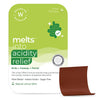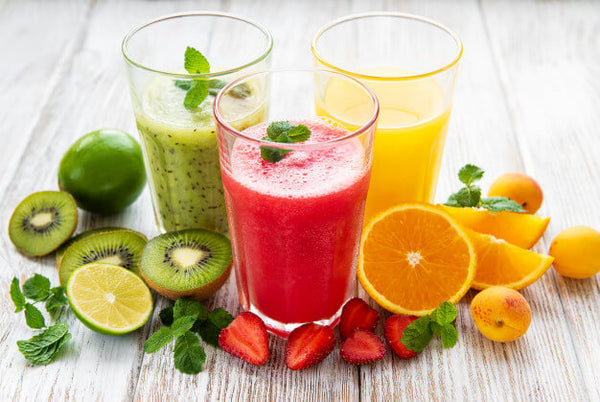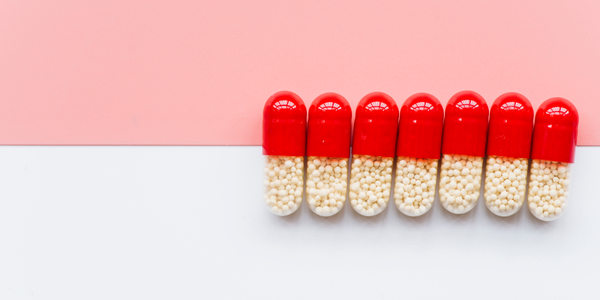That uncomfortable feeling after a meal, whether it’s a burning in your chest, bloating, or nausea, is more common than you think. But while many people use the terms acidity, acid reflux, and indigestion interchangeably, each one signals a different kind of digestive disruption.
Understanding what exactly is going on inside your gut is key to managing your symptoms effectively and supporting long-term digestive health. Let’s break down the differences, causes, and natural ways to find relief.
What’s Actually Happening in Your Gut?
Acidity
Acidity occurs when your stomach produces more acid than your digestive system can comfortably handle. This acid plays an important role in breaking down food, but if there's an excess, it can irritate the stomach lining or escape into the esophagus, the tube that connects your mouth to your stomach, causing discomfort.
Common symptoms of acidity include:
-
A burning sensation in the chest or throat
-
Sour taste in the mouth or food regurgitation
-
A feeling of heaviness or bloating after eating
-
Nausea (NIH)
Acidity is often triggered by skipping meals, eating very spicy or oily food, consuming large meals, or lying down soon after eating. Stress and poor sleep can also increase acid production, making the symptoms worse.
Indigestion (Also Known as Dyspepsia)
Indigestion is a more general term used to describe discomfort in the upper abdomen. It isn’t necessarily tied to acid levels but rather to how your body is processing food. It often occurs when you eat too quickly, consume too much food, or eat something your body doesn’t digest well.
Typical symptoms of indigestion include:
-
Bloating or a feeling of fullness during meals
-
Mild to moderate abdominal discomfort
-
Excess burping or flatulence
-
Nausea (NIH)
Indigestion is less about stomach acid and more about your digestive system’s overall ability to break down and absorb food. It can be influenced by eating habits, emotional stress, or intolerance to certain ingredients.
Acid Reflux
Acid reflux happens when the acid in your stomach moves upward into the esophagus. This usually occurs when the lower esophageal sphincter (LES)—a ring-like muscle that acts as a gate between the stomach and esophagus—becomes weak or relaxed and fails to close properly after food enters the stomach. (NIH)
This condition can feel similar to acidity but comes with a few standout symptoms, such as:
-
Heartburn (burning in the chest, especially after eating or lying down)
-
A sour or bitter taste in the mouth
-
Chronic cough or throat irritation
-
Difficulty swallowing
Although it shares symptoms with acidity, acid reflux has its own set of distinctive signs:
-
Burning in the chest or heartburn, especially after eating
-
A sour or bitter taste in the mouth
-
A persistent cough or throat irritation
-
Trouble swallowing
When acid reflux becomes frequent, it may develop into a chronic condition known as GERD (Gastroesophageal Reflux Disease).
So, How Are These Conditions Different?
While they may seem similar and sometimes overlap, acidity, indigestion, and acid reflux have unique triggers and symptom profiles. Here's a quick comparison:
|
Condition |
Primary Symptom |
When It Occurs |
|
Acidity |
Burning sensation |
Often post-meal or at night |
|
Indigestion |
Bloating and discomfort |
During or right after eating |
|
Acid Reflux |
Heartburn and sour regurgitation |
After eating or lying down |
What Causes Digestive Discomfort?
Each of these conditions can have specific causes, but there are also many overlapping lifestyle and dietary habits that contribute to all three.
1. Dietary Habits
The food and beverages you consume can significantly impact how well your digestive system functions. Common culprits include:
-
Spicy, oily, or overly rich foods
-
Caffeinated drinks, chocolate, and sodas
-
Overeating or eating too fast
-
Skipping meals or eating at irregular times
These habits can increase stomach acid, slow digestion, and lead to symptoms like bloating, burning, and nausea.
2. Lifestyle Factors
How you live day to day can also affect your digestive health.
-
Stress: Chronic stress interferes with the gut-brain axis, which regulates digestion.
-
Poor sleep: Inadequate or irregular sleep can disturb your digestive rhythm.
-
Smoking and alcohol: Both can irritate the stomach lining and weaken the LES, making reflux more likely.
-
Lack of movement: A sedentary lifestyle slows down digestion, making bloating and discomfort more frequent.
3. Medical Conditions and Triggers
Some health conditions may increase your risk of experiencing ongoing digestive symptoms:
-
GERD: A chronic form of acid reflux
-
Obesity: Puts pressure on the stomach, pushing acid upward
-
Pregnancy: Hormonal changes and pressure from the growing uterus affect digestion
-
Hiatal hernia: A physical condition that allows the stomach to push up into the chest cavity
-
Food intolerances: Lactose or gluten intolerance can lead to indigestion and bloating.
Supporting Digestive Health, Naturally
In today's fast-paced world, it's easy to reach for over-the-counter medications when symptoms strike. But there are natural and effective ways to support your digestive system without immediately relying on synthetic treatments.
Simple Daily Practices That Make a Difference
-
Eat mindfully: Chew thoroughly and avoid rushing through meals.
-
Maintain consistent meal times: Avoid long gaps between eating.
-
Stay hydrated: Water helps with digestion and nutrient absorption.
-
Manage stress: Practice deep breathing, meditation, or gentle movement to calm your nervous system.
-
Incorporate movement: Even light walking after meals can aid digestion.
Natural Digestive Support
When symptoms persist, your body might benefit from a little extra support. Look for digestive solutions that combine herbal and clinically studied ingredients like:
-
Ginger: Helps soothe the stomach and reduce nausea
-
Licorice root: Known to protect the stomach lining
-
Digestive enzymes: Aid in breaking down food more efficiently
-
Fennel, peppermint, or chamomile: Calm bloating and gas
Today, many of these ingredients are available in modern, easy-to-use formats, such as oral strips, teas, or effervescent tablets, that are both fast-acting and gentle on the system. These can be particularly helpful for people who experience symptoms occasionally but want to avoid dependency on conventional antacids or acid suppressants.
Final Thoughts
Acidity, indigestion, and acid reflux are all signs that your digestive system needs attention, but they are not the same thing.
-
Acidity is caused by too much stomach acid.
-
Indigestion results from poor food breakdown or sensitivity to meals.
-
Acid reflux is when stomach acid flows upward into the esophagus.
When you understand the nature of your discomfort, you can choose the right strategies to address it—whether that’s changing your eating habits, managing stress, or turning to gentle, plant-based support. A healthier gut doesn’t require drastic changes, just a few intentional steps in the right direction.
FAQs
1. What is the difference between acid reflux and indigestion?
Acid reflux involves acid moving into the esophagus, causing a burning chest sensation. Indigestion, on the other hand, refers to a general discomfort in the upper abdomen, usually after eating.
2. Can acidity lead to acid reflux?
Yes. Chronic acidity can irritate the esophagus and weaken the valve that prevents backflow, leading to acid reflux.
3. What are the common signs of indigestion?
Bloating, feeling full too quickly, nausea, and burping are typical signs of indigestion.
4. How can I prevent acid reflux naturally?
Eat smaller, slower meals. Avoid lying down right after eating. Limit acidic and spicy foods. And consider natural digestive support, like herbal enzyme strips or supplements for acidity relief.































 DOWNLOAD NOW
DOWNLOAD NOW
